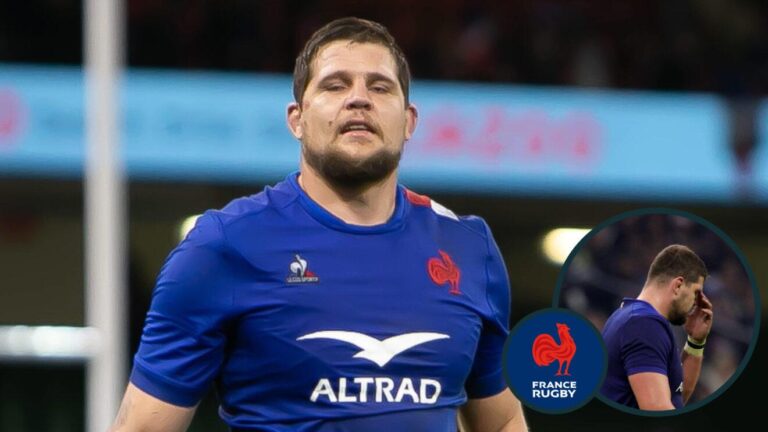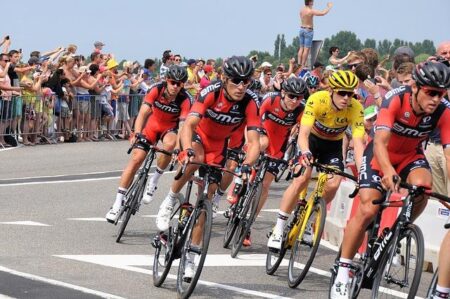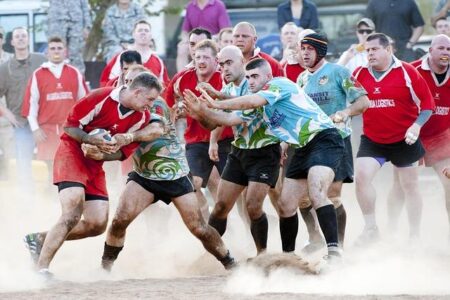In a significant blow to the rugby community, French lock Paul Willemse has announced his retirement from the sport due to the cumulative effects of multiple concussions. The decision comes after a series of health concerns that have raised alarm among athletes and organizations alike regarding player safety in high-contact sports. Willemse, a pivotal figure for France’s national team, has contributed immensely to the game, but this troubling development underscores the growing discourse on head injuries and their long-term implications for players. As the sport grapples with its future, Willemse’s choice serves as a poignant reminder of the physical toll of rugby and the urgent need for enhanced safety measures.
Impact of Multiple Concussions on Athletes’ Careers
The decision by France lock Willemse to retire highlights a growing concern in sports regarding the long-term effects of repeated head injuries. Concussions, often seen as just another hurdle in an athlete’s career, are proving to have more serious consequences than previously recognized. The cumulative effect of multiple concussions can lead to significant health issues, including chronic traumatic encephalopathy (CTE), cognitive decline, and mood disorders. This phenomenon poses urgent questions for sports organizations about how they manage player safety and prioritize health over performance.
In light of Willemse’s retirement, several key factors regarding multiple concussions in athletes’ careers emerge:
- Health Risks: Continuous exposure to head trauma can result in irreversible brain damage.
- Career Longevity: Athletes may find their careers cut short due to health concerns, impacting their financial stability.
- Awareness and Education: Increased focus on concussion protocols can lead to better prevention and treatment strategies.
Furthermore, as public awareness grows, there needs to be a shift in how both fans and management view the physical toll of the sport, ensuring that the health of players is prioritized even if it means sacrificing short-term victories.
Understanding the Long-Term Effects of Concussions in Rugby
The decision made by French lock Willemse to retire following repeated concussions sheds light on the alarming long-term impacts of head injuries prevalent in rugby. Players in contact sports often face the risk of cognitive decline, mood disorders, and neurodegenerative diseases as a consequence of multiple concussions. Research indicates that even mild concussions, if accumulated over time, can lead to enduring issues, including:
- Memory loss: Difficulty in recalling recent events or learning new information.
- Concentration problems: Challenges in maintaining focus during tasks or conversations.
- Personality changes: Increased irritability or mood swings that affect relationships.
A recent study examining rugby players showed that retired athletes often report symptoms associated with Chronic Traumatic Encephalopathy (CTE), which is characterized by severe cognitive and emotional disturbances. This data raises imperative questions surrounding safety protocols and the necessary adjustments needed in training regimens. The table below highlights notable symptoms experienced by retired rugby players who have sustained multiple concussions:
| Symptom | Percentage Reporting |
|---|---|
| Memory Loss | 67% |
| Depression | 45% |
| Anxiety Issues | 38% |
| Sleep Disorders | 30% |
The statistics reveal a clear need for tougher regulations and enhanced medical oversight in rugby to protect players before they face irreversible consequences. Organizations must prioritize research and develop comprehensive educational programs to mitigate risks surrounding concussion-related injuries in the sport.
Recommendations for Enhanced Safety Protocols in Contact Sports
The retirement of prominent rugby player Willemse due to multiple concussions raises critical discussions surrounding safety in contact sports. Athletic organizations must prioritize player health by implementing rigorous safety protocols. Recommendations include:
- Improved Concussion Protocols: Mandate immediate evaluation for players showing signs of head injury.
- Education Programs: Develop mandatory training on recognizing concussion symptoms for athletes, coaches, and medical staff.
- Enhanced Protective Gear: Invest in research and development of advanced helmets that better absorb impacts.
In addition to these measures, it’s vital to foster a culture that values safety over aggression. Encouraging athletes to speak up about their health concerns can break the stigma surrounding injuries. Furthermore, establishing a comprehensive data collection system regarding head injuries will allow governing bodies to make informed decisions. A potential framework could look like this:
| Action Item | Responsible Party | Timeline |
|---|---|---|
| Concussion Education Workshop | Sports Federations | Quarterly |
| Helmet Safety Standards Update | Manufacturers | Annually |
| Concussion Reporting System | Team Medical Staff | Immediate |
The Future of Player Health: Balancing Competition and Wellbeing
The recent retirement of French lock Willemse due to multiple concussions has reignited the urgent discussion surrounding player safety in professional sports. As athletes push their physical limits in the name of competition, the risks associated with such endeavors have become increasingly apparent. The decision to prioritize personal health over a promising career reflects a growing awareness within the sporting community. Sports organizations are now faced with the challenging task of implementing better protocols to safeguard players while still maintaining the competitive spirit that draws fans to the game.
To address these concerns, several initiatives are being proposed to enhance player well-being without compromising competition, including:
- Enhanced Concussion Protocols: Mandatory assessments before players can return to the field.
- Education Programs: Training for players, coaches, and medical staff about the long-term impacts of head injuries.
- Investment in Technology: Utilizing advanced monitoring systems to track player health metrics in real-time.
As the sport evolves, the introduction of these changes will determine the balance between preserving a robust competitive environment and ensuring the longevity of the athletes’ health. The commitment of leagues and governing bodies to foster a culture of safety is vital not only for the sport but also for the next generation of players.
Insights and Conclusions
In conclusion, the retirement of lock Paul Willemse underscores the growing concern surrounding player safety in rugby, particularly regarding the long-term effects of concussions. His decision highlights the pressing need for ongoing discussions about player health and the implementation of stricter protocols to protect athletes from the severe consequences of repeated head injuries. As the rugby community grapples with this pressing issue, Willemse’s departure serves as a vital reminder of the human cost associated with the sport, emphasizing the importance of prioritizing player welfare in all levels of competition. The legacy of his contributions to French rugby will not be forgotten, but his departure opens up a critical dialogue about the future of player safety in the sport.




